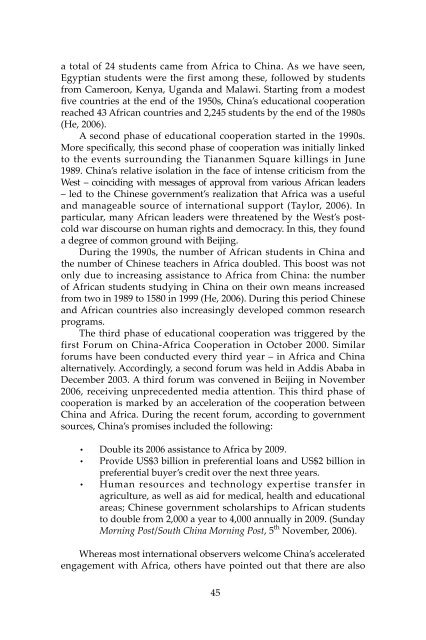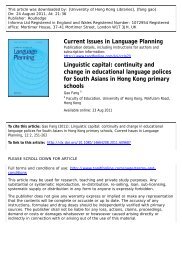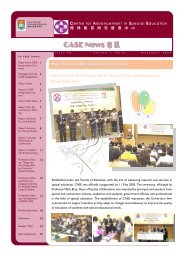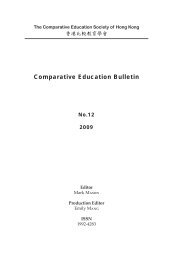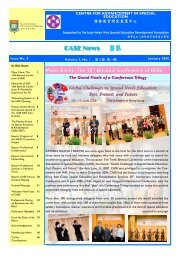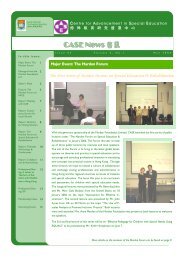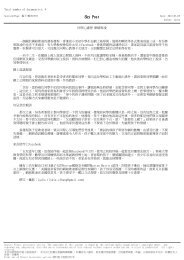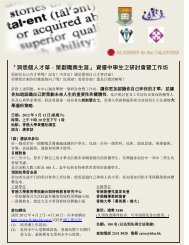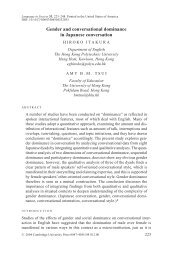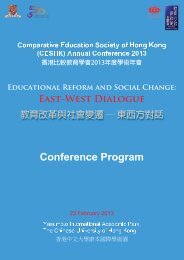Comparative Education Bulletin - Faculty of Education - The ...
Comparative Education Bulletin - Faculty of Education - The ...
Comparative Education Bulletin - Faculty of Education - The ...
Create successful ePaper yourself
Turn your PDF publications into a flip-book with our unique Google optimized e-Paper software.
a total <strong>of</strong> 24 students came from Africa to China. As we have seen,<br />
Egyptian students were the first among these, followed by students<br />
from Cameroon, Kenya, Uganda and Malawi. Starting from a modest<br />
five countries at the end <strong>of</strong> the 1950s, China’s educational cooperation<br />
reached 43 African countries and 2,245 students by the end <strong>of</strong> the 1980s<br />
(He, 2006).<br />
A second phase <strong>of</strong> educational cooperation started in the 1990s.<br />
More specifically, this second phase <strong>of</strong> cooperation was initially linked<br />
to the events surrounding the Tiananmen Square killings in June<br />
1989. China’s relative isolation in the face <strong>of</strong> intense criticism from the<br />
West – coinciding with messages <strong>of</strong> approval from various African leaders<br />
– led to the Chinese government’s realization that Africa was a useful<br />
and manageable source <strong>of</strong> international support (Taylor, 2006). In<br />
particular, many African leaders were threatened by the West’s postcold<br />
war discourse on human rights and democracy. In this, they found<br />
a degree <strong>of</strong> common ground with Beijing.<br />
During the 1990s, the number <strong>of</strong> African students in China and<br />
the number <strong>of</strong> Chinese teachers in Africa doubled. This boost was not<br />
only due to increasing assistance to Africa from China: the number<br />
<strong>of</strong> African students studying in China on their own means increased<br />
from two in 1989 to 1580 in 1999 (He, 2006). During this period Chinese<br />
and African countries also increasingly developed common research<br />
programs.<br />
<strong>The</strong> third phase <strong>of</strong> educational cooperation was triggered by the<br />
first Forum on China-Africa Cooperation in October 2000. Similar<br />
forums have been conducted every third year – in Africa and China<br />
alternatively. Accordingly, a second forum was held in Addis Ababa in<br />
December 2003. A third forum was convened in Beijing in November<br />
2006, receiving unprecedented media attention. This third phase <strong>of</strong><br />
cooperation is marked by an acceleration <strong>of</strong> the cooperation between<br />
China and Africa. During the recent forum, according to government<br />
sources, China’s promises included the following:<br />
•<br />
•<br />
•<br />
Double its 2006 assistance to Africa by 2009.<br />
Provide US$3 billion in preferential loans and US$2 billion in<br />
preferential buyer’s credit over the next three years.<br />
Human resources and technology expertise transfer in<br />
agriculture, as well as aid for medical, health and educational<br />
areas; Chinese government scholarships to African students<br />
to double from 2,000 a year to 4,000 annually in 2009. (Sunday<br />
Morning Post/South China Morning Post, 5 th November, 2006).<br />
Whereas most international observers welcome China’s accelerated<br />
engagement with Africa, others have pointed out that there are also<br />
45


